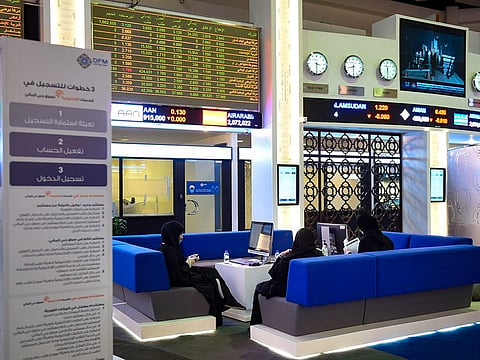Western institutional funds are latching on to UAE stocks’ growth story
Will retail investors too follow this direction as US stocks turn even more expensive?

Fifteen years ago, it would have been strange for young Americans or Scandinavians to do business with UAE fund managers. These days, every young person from the West seems to have had that experience. Far from it being confined to real estate, interest has now moved to the institutional level, as domestic capital markets have surged in activity, with listed UAE companies having found themselves in the coveted MSCI Emerging markets index.
But in many cases, the interest has moved beyond that hallowed list, and people have found that one of the ways to sell equities to foreign fund managers has been the fact that others have also bought. Nothing moves Western fund managers so surely as the fear of being left behind.
For the largest of the sovereign wealth funds, that fear is not a factor. With holdings in most of the recent IPOs, as well as in bellwether stocks such as FAB, ADCB, ENBD and Emaar, the funds have clearly demonstrated an appetite that is only bound to increase as UAE markets gain prominence.
Interestingly enough, the value weightages of the Norwegian wealth fund swims into focus, with holdings of Salik exceeding that of FAB and Emaar Development. While there are a number of factors at play that lead to such allocations, valuations are at the heart of the matter. And any entry into such positions reflect the long-term outlook that the fund has for each of these investments, suggesting that even as overall allocations increase, the emphasis on domestic growth opportunities with a margin of safety is high on the list of such fund managers.
Ripe for higher allocations
When you add to the fact that Western equity markets (looking at Shiller’s CAPE ratio) are more expensive than when they were in 1929, you have a market displacement that augurs for higher allocations towards the Middle East and other emerging markets.
It is easy to quibble with this stance, and to read too much into the relatively small allocations that have thus far been invested in the GCC markets. But this can be broken down into a simple set of metrics. Western equity markets do not provide for a margin of safety from their current levels, despite the greater levels of innovation and liquidity that they offer, which is the opposite of the value proposition seen in this part of the world.
Undoubtedly, as secondary market liquidity rises, allocations will further increase, as they will with greater numbers of IPOs that are in the pipeline over the next 12 months or so. From an absolute as well as a relative standpoint then, there is bound to be an increase in the number of foreign institutional holdings.
This, however, is not the entire story.
For retail investors, long used to ‘buying the index’, the shift towards buying individual companies is becoming more compelling as a change in investment culture is underway. Go back in the history of investment literature and there was hardly a mention of buying the index.
Rather the focus was always on companies that changed society or else provided extraordinary value relative to their price. In the real estate space, this has already been seen. (Some would argue that the markets have even overshot themselves, given the number of new launches entering the marketplace, which do not include the refurbishments that are taking place.)
Heed the warning signs
Individual investors long enamored with Western stocks such as Apple, Microsoft and more recently Nvidia, will hardly pay attention to CAPE (cyclically adjusted price-to-earnings) ratios and other such Cassandra-like warnings that have been proven repeatedly wrong over the past decade.
They would be well advised to look at 1999 and 2007, when valuation ratios flashed red. In both instances, investors had to wait out the better part of a decade to recoup their capital. In domestic markets, Western asset managers such as Franklin Templeton have already introduced ‘feeder funds’ that capitalize on local equity flows.
Even better would be for investors to pick stocks with a little bit of research, for that is what it takes to realize the yawning gap that exists between the valuation of Western and UAE equity markets.
It is easy to forget the spike in foreign investment activity into the local capital markets, and instead focus on the rising values in the West. (Admittedly, it is coming off a small base).
Sovereign wealth funds as well as individual investors in the West are starting to look at the other way, focusing on the margin of safety that is becoming ever more obvious. Local investors would do well to look at the influx and capitalize on the same.
Sign up for the Daily Briefing
Get the latest news and updates straight to your inbox


